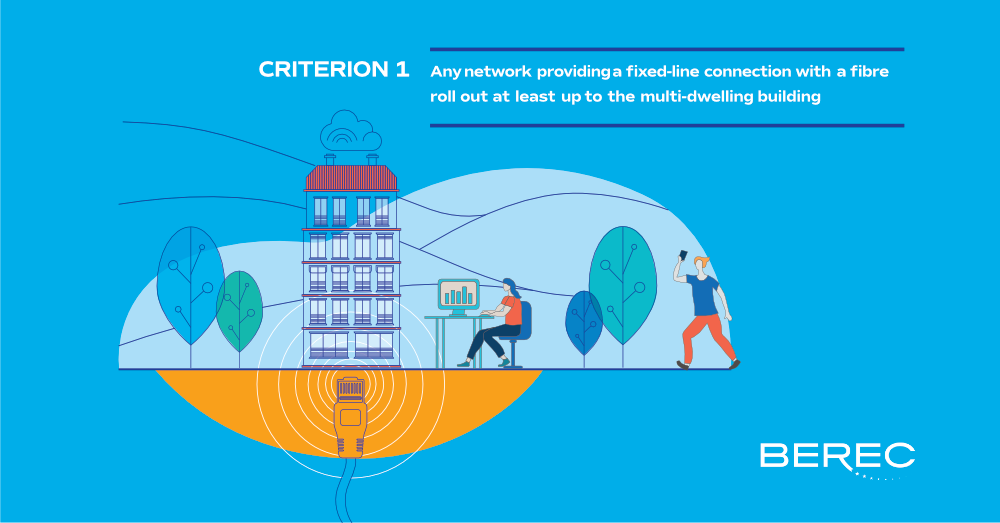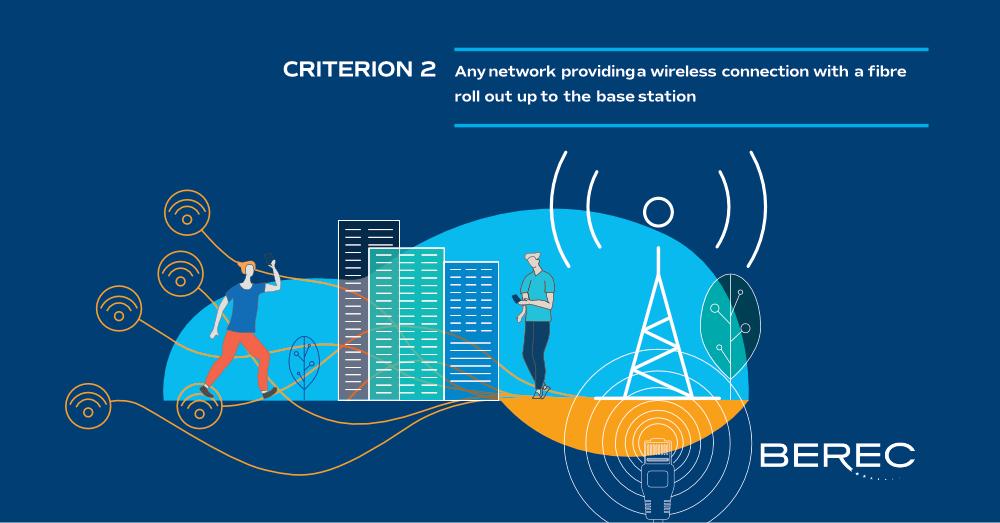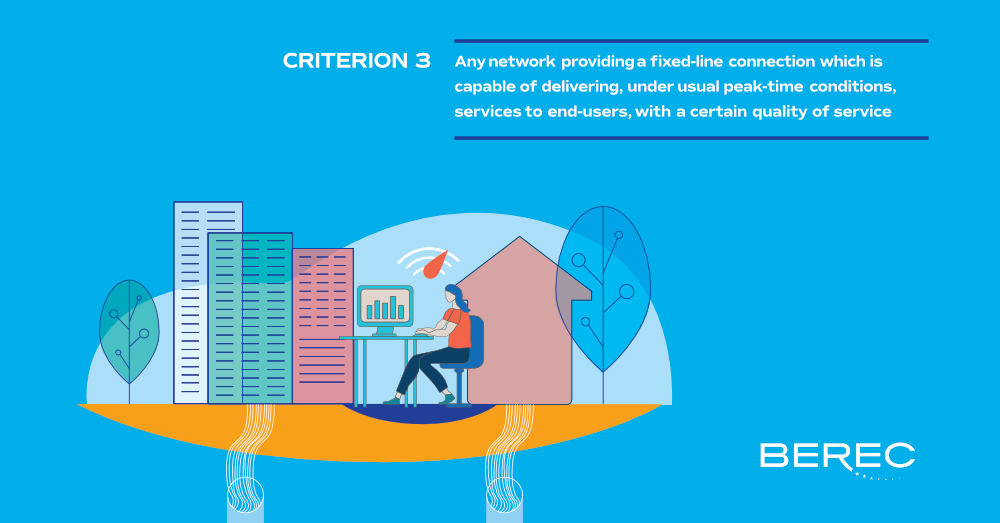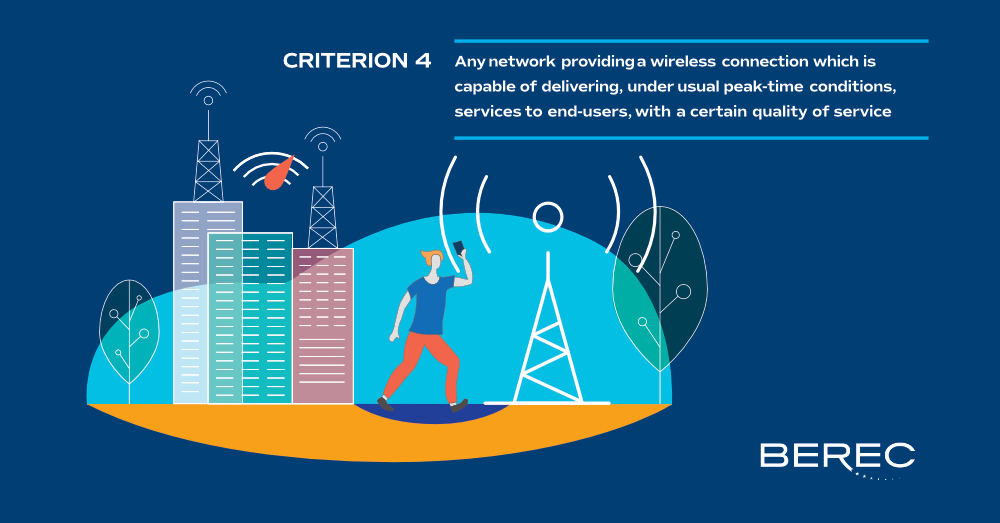What are Very High Capacity Networks?
In Article 82 of the Directive (EU) 2018/1972 of the European Parliament and of the Council establishing the European Electronic Communications Code – the EECC – the legislator, the European Parliament and the Council, entrusted the Body of European Regulators for Electronic Communications (BEREC) with the task of issuing guidelines on the criteria that a network has to fulfil in order to be considered a Very High Capacity Network (VHCN) – the BEREC Guidelines on Very High Capacity Networks. BEREC determined that any network which fulfils one (or more) of the following four criteria is a VHCN.
Criterion one
Any network providing a fixed-line connection with a fibre roll out at least up to the multi-dwelling building. For example, this criterion is fulfilled in case of Fibre to the Building – “FTTB” – and also in case of Fibre to the Home – “FTTH”.

Criterion two
Any network providing a wireless connection with a fibre roll out up to the base station. For example, this criterion is fulfilled in case of mobile networks with fibre roll out up to the base station or a public WLAN – “WiFi” – network with fibre roll out up to the access point.

Criterion three
Any network providing a fixed-line connection which is capable of delivering, under usual peak-time conditions, services to end-users with a certain Quality of Service (QoS) (see table below).

Criterion four
Any network providing a wireless connection which is capable of delivering, under usual peak-time conditions, services to end-users with a certain QoS (see table below). The threshold values refer to outdoor locations only and to the average value within the coverage area considered.

Quality of Service
| Quality of Service Parameter | Fixed (criterion three) | Wireless (criterion four) |
|---|---|---|
| Download data rate | ≥ 1000 Mbps | ≥ 350 Mbps |
| Uplink data rate | ≥ 200 Mbps | ≥ 50 Mbps |
| IP packet error ration | ≤ 0.05% | ≤ 0.01% |
| IP packet loss ratio | ≤ 0.0025% | ≤ 0.01% |
| Round-trip IP packet delay | ≤ 10 ms | ≤ 18 ms |
| IP packet delay variation | ≤ 2 ms | ≤ 5 ms |
| IP service availability | ≥ 99.9% per year | ≥ 99.9% per year |
All four criteria are based on the definition of the term VHCN in the EECC and criteria three and four also on data collected from network operators.